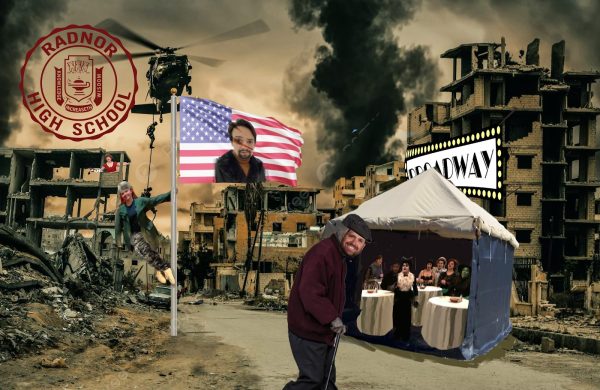Happy Veterans Day and Thank You To All Those Who Serve and Served
November 13, 2017
Veterans Day is the day we celebrate the men and women brave enough to join and persist through their jobs in the military, risking their lives to protect ours. The National Veterans Day Ceremony begins at Arlington National Cemetery every Veterans Day at exactly 11 O’Clock in the morning, beginning with the laying of a wreath at the Tomb of the Unknowns followed by a parade of colors and remarks by dignitaries in the Memorial Amphitheater.
Veterans Day was initially called ‘Armistice Day’ to celebrate those who died during World War I when the Armistice with Germany came into effect. In 1945, veteran Raymond Meeks led a delegation to speak with General Dwight Eisenhower and they agreed that Armistice Day should celebrate all veterans and not just those fallen in WWI. On May 26, 1954, Congress presented a bill establishing Armistice Day as a celebration of all veterans. Not long after, ‘Armistice Day’ officially became ‘Veterans Day.’
There are several holidays similar to that of Veterans Day. Memorial Day, for example, is the celebration of all members of the United States military that died in the line of duty. Armed Forces Day, celebrated on the third Sunday of May, recognizes everyone currently serving in any branch of the United States military. In the same vein, Veterans Day is an important day for the people of America, allowing us to recognize those who have made personal sacrifices to uphold the principles of our country.
Although appreciation for veterans extend beyond a single day, Veterans Day draws special attention from American public and businesses. On Veterans Day, shops, restaurants, and attractions offer special discounts or free things to show their appreciation for what the military does. Across the country there are parades and various other celebrations that occur, and people may even go out ot their way to thank Veterans for their service. However, as we relish in the freedom secured by our troops, we must empathize with the reality many veterans still face.
About 11% of all homeless people in America are veterans, with about 39,471 veterans homeless any given night. There are homeless veterans of every conflict since World War II: nearly half from the Vietnam era, two-thirds having served at least 3 years, and one third stationed in a war zones. There’s also about 1.4 million veterans that are at risk of becoming homeless, due to poverty, lack of support networks, and dismal, overcrowded, substandard housing. Furthermore, at-risk veterans may have post-traumatic stress disorder (PTSD), a substance abuse problem, or both. As a result, when these veterans return home, they tend to face challenges assimilating back into society. For example, PTSD sufferers tend to face depression, anxiety, or relational problems such as a divorce. With about 20% of the 2.7 million American veterans of Iraq and Afghanistan diagnosed with PTSD, integration is clearly an issue. While 50% of those diagnosed veterans with PTSD seek treatment, only about half of those get even “minimally adequate” treatment. The prolonged suffering caused by these factors can eventually push veterans to suicide. In 2012 more active duty personnel died by their own hand then in combat. In 2014, 20 veterans killed themselves every day, which comprised 18% of all adult suicide deaths in the United States.
We as Americans need to continue to support our veterans, not only in the occasional celebratory ways that we do now, but also in ways that address their often forgotten needs. We should all strive to celebrate our veterans on this Veterans Day in whatever way we can, because only through their sacrifices, bravery, and patriotism are we able to thrive as a free country. Thank you to all veterans and all military personnel for what you have done, do, and will continue to do, and have a happy Veterans Day.
Sources:
http://nchv.org/index.php/news/media/background_and_statistics/
https://www.oceansidedivorcelawfirm.com/military-divorce/infographic/
https://www.ptsd.va.gov/public/ptsd-overview/basics/what-is-ptsd.asp
http://www.veteransandptsd.com/PTSD-statistics.html
https://www.va.gov/opa/publications/factsheets/Suicide_Prevention_FactSheet_New_VA_Stats_070616_1400.pdf






